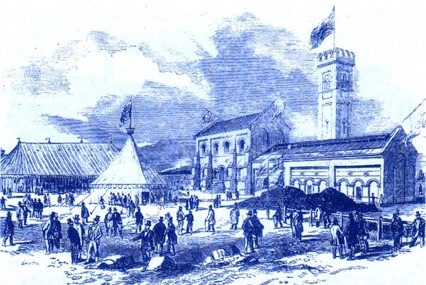Waterworks architecture in the United Kingdom has undergone significant transformations throughout history, reflecting the changes in society’s values, needs, and technological advancements. From ancient aqueducts to modern pumping stations, these structures not only serve a functional purpose but also stand as testaments to the progress and development of the nation. In this article, we delve into the rich history of waterworks architecture in the UK, exploring its evolution and its profound impact on society.
History of Waterworks Architecture in the UK
Ancient Waterworks: The Roman Influence
Waterworks architecture in the UK can be traced back to the Roman occupation, during which the Romans introduced sophisticated hydraulic engineering techniques. They constructed aqueducts, such as the remarkable Hadrian’s Aqueduct, to transport water from distant sources to urban centers. These impressive structures showcased the Romans’ advanced knowledge of engineering and their commitment to providing clean water to the population.
Medieval Times: From Wells to Early Watermills
During the medieval period, waterworks architecture primarily revolved around wells and early watermills. Wells were essential for accessing groundwater, which was often the main source of water for communities. As settlements grew, the need for more efficient water supply systems became apparent. This led to the development of watermills, which harnessed the power of flowing water to grind grain and perform other tasks.
The Industrial Revolution: A Turning Point
The Industrial Revolution marked a significant turning point in waterworks architecture in the UK. Rapid industrialization and urbanization created a surge in the demand for water, both for domestic and industrial purposes. As a result, water supply systems had to adapt and expand to meet the growing needs of the population.
In this era, engineers like Thomas Telford and James Brindley revolutionized the field of waterworks architecture. They designed and constructed canals, reservoirs, and water supply networks that enabled water to be transported over long distances, supplying both industrial centers and growing cities.
Victorian Era: The Rise of Ornate Waterworks
The Victorian era witnessed a shift in waterworks architecture towards more ornate and decorative designs. As the British Empire reached its zenith, the construction of grand waterworks became a symbol of national pride and progress. Reservoirs, pumping stations, and water towers were built in elaborate architectural styles, often incorporating elements of Gothic or classical design.
Notable examples of Victorian waterworks architecture include the iconic Tower Bridge Waterworks in London and the picturesque Loch Katrine Waterworks in Scotland. These structures not only provided essential water services but also became celebrated landmarks, enhancing the visual appeal of the surrounding areas.
Modern Innovations: Embracing Functionality and Sustainability
In the modern era, waterworks architecture has shifted its focus towards functionality and sustainability. As environmental concerns and resource scarcity become increasingly important, water treatment plants, eco-friendly reservoirs, and efficient pumping systems have gained prominence.
Contemporary waterworks designs prioritize energy efficiency, water conservation, and the use of renewable resources. Cutting-edge technologies, such as smart monitoring systems and advanced filtration methods, ensure the delivery of safe and clean water to communities while minimizing environmental impact.
The Socioeconomic Impact of Waterworks Architecture
Beyond their functional purpose, waterworks architecture has had a profound socioeconomic impact on the UK. These structures have played a crucial role in improving public health, stimulating economic growth, and shaping the development of cities and towns.
Public Health and Sanitation
The development of waterworks infrastructure, particularly during the Industrial Revolution, had a transformative effect on public health. Access to clean and safe water for drinking, cooking, and sanitation significantly reduced the spread of waterborne diseases, improving the overall health and well-being of the population.
Industrial Development and Urbanization
Waterworks architecture played a crucial role in supporting the rapid industrialization and urbanization of the UK. The construction of canals and water supply networks facilitated the growth of industries, such as manufacturing and mining, by providing a reliable water source for steam engines and production processes. This, in turn, fueled economic growth and urban expansion.
Cultural and Architectural Heritage
The rich history of waterworks architecture in the UK has left behind a legacy of cultural and architectural heritage. Many of these structures have been preserved and are now recognized as important historical landmarks. They contribute to the unique character of cities and towns, attracting tourists and serving as a reminder of the nation’s engineering prowess and societal progress.
Conclusion
Waterworks architecture in the UK is a testament to the nation’s ingenuity, adaptability, and societal evolution. From the ancient aqueducts of the Romans to the modern, sustainable water treatment plants of today, these structures reflect the changing needs, values, and technological advancements of society. Waterworks architecture has not only provided essential water services but has also shaped public health, stimulated economic growth, and contributed to the cultural and architectural heritage of the UK. As we appreciate and preserve these remarkable structures, we honor their historical significance and continue to benefit from their enduring contributions to society.
